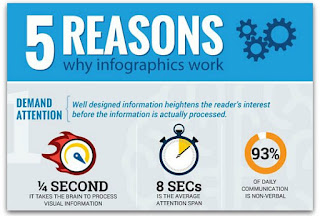When the time came to move out of New York City, I set my sites on moving down South. I have always heard that the South was very welcoming and full of charm, so I was naturally very exited to replant my roots in North Carolina. The southern charm of being in North Carolina was short lived because up until recently the state had an outdated HIV criminalization laws that required individuals living with HIV to disclose their HIV status to any sexual partners.
Failure to do so, among other requirements under the law, would result in serious consequences like prosecution and jail time. According to the Sero Project, in North Carolina the maximum penalty for violation is two years in prison if convicted.[1] There are numerous and various cases of this including a man living with HIV being convicted and then sentenced to 35 years in prison for using a deadly weapon on a police officer… his saliva.[2]
As a man living with HIV it sets off all my alarm bells for various reasons. The first is that much of driving force behind the adoption of the HIV criminalization laws was the fear that surfaced during the early years of the epidemic. Thirty years ago, it was certainly a death sentence but modern medicine has changed that diagnosis with the great leaps in antiretroviral therapy. According to the Centers for Disease Control & Prevention, anyone living with HIV who takes anti-retroviral medication as prescribed, and who have an undetectable viral load, presents no risk of transmitting the virus to an HIV-negative person.[3]
Unfortunately, many things have not changed along side modern medicine, such as fear, misconceptions and uninformed beliefs and thought processes regarding HIV. Additionally what concerns me with HIV criminalization laws is that it continues to keep the stigma that is attached to being HIV-positive in place. There are numerous forces that put in enormous effort to diminish or eradicate stigma but these laws set back all of the progress that has been made over the years. What these laws ultimately do is create a level of fear that is dangerous for those who are HIV-negative and HIV-positive. For those who are HIV-negative the fear of prosecution from an HIV diagnosis keeps them from being tested when the real fear is not knowing or infecting others unknowingly. For those who are HIV-positive the stigma and fear of prosecution pulls them away from seeking treatment or continuing their care. The end result is detrimental to those in and out of the HIV community and completely counterproductive.
Luckily, the recent change to the HIV-criminalization law in North Carolina has changed the steering for us as a collective society to head in a different direction.[4] Under the new law those living with HIV no longer have to disclose their HIV status to sexual partners if they are virally suppressed for six months or longer. Along side these changes, the revised law also reflects a change in language, which replaces “a person infected with AIDS” with “a person living with HIV”. While these changes are small they have huge impacts in the fight against HIV and the stigma that is attached to it. This revision is aligned with the changes that have occurred since the beginning of the epidemic and reflect more accurately the realities of living with HIV and the consciousness that is needed in order to ensure that we, as a collective society, are informed appropriately and accurately. If we continue this upward pace then things will definitely start getting a little sweeter down here.
 |
| Photo Source: Western North Carolina AIDS Project |
[1] The Sero Project. North Carolina. Data from the GNP+ Global Criminalization Scan. Retrieved from: http://www.seroproject.com/states/north-carolina/
[2] New York Times. (2008, May 16). Prison for Man With H.I.V Who Spit on a Police Officer. Retrieved from: https://www.nytimes.com/2008/05/16/us/16spit.html
[3] HIV Plus Magazine. (2017, October 22). CDC Officially Admits People With HIV Who Are Undetectable Can’t Transmit HIV. Retrieved from https://www.hivplusmag.com/undetectable/2017/9/27/breaking-cdc-officially-recognizes-undetectableuntransmittable-hiv-prevention
[4] Western North Carolina AIDS Project. (2018, Feb 20). HIV Criminalization Laws Change in North Carolina. Retrieved from: https://wncap.org/2018/02/20/hiv-criminalization-laws-change-north-carolina/
Disclaimer: Guest blogs do not necessarily reflect the views of the ADAP Advocacy Association, but rather they provide a neutral platform whereby the author serves to promote open, honest discussion about public health-related issues and updates.




